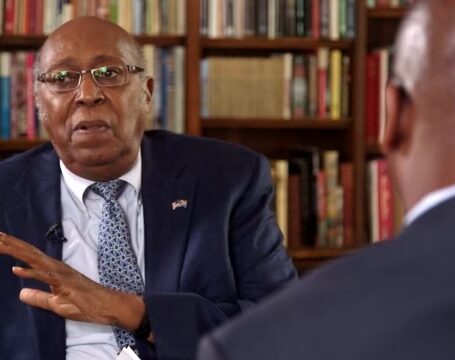Two Social Scientists and Two Policy Paths
 Two deaths over the Christmas-New Year’s holidays have caused me to reflect on how social scientists use their knowledge in different ways for different purposes. This sometimes causes difficulties in perceptions, particularly among policy makers, about what the social sciences are about and what they are good for.
Two deaths over the Christmas-New Year’s holidays have caused me to reflect on how social scientists use their knowledge in different ways for different purposes. This sometimes causes difficulties in perceptions, particularly among policy makers, about what the social sciences are about and what they are good for.

Howard J. Silver served for a quarter century as the executive director of the Consortium of Social Sciences Agencies. His blog appears monthly at Social Science Space.
He led both the Institute for Social Research at the University of Michigan (1986-89) and the Center for Advanced Study in the Behavioral Sciences in Palo Alto (1989-94), two of the nexus of institutions that have been crucial to the advancement of the social sciences. During these times and throughout his career, he was a strong ally for the Consortium of Social Science Association (COSSA) and the community’s efforts to bolster the role of the social sciences in the nation’s science policy agenda.

A panel in Paris, 1992. From left, David Featherman, president of Social Science Research Council; Roberta Balstad, first executive director of COSSA and later president of the Consortium on International Environmental Information Networks; Howard Silver, executive director of COSSA; and Phil Converse.
After his years at CASBS, Phil returned to the University of Michigan as professor emeritus of sociology and political science continuing his work with the Institute for Social Research and its components for the rest of his career.
I never met Martin Anderson, who died on January 3, 2015, at the age of 78, after spending many years at the Hoover Institution in Palo Alto. Yet, in my early years at COSSA we knew that Anderson, who had a Ph.D. in industrial management from the Sloan School at MIT, had played an important role in convincing David Stockman and President Reagan to severely cut the social sciences at the National Science Foundation.
Anderson had been an adviser to Reagan’s 1976 and 1980 presidential campaigns. When Reagan became president, Anderson would lead the Domestic Policy Council from 1981-82. Like Milton Friedman and others, Anderson had problems with the National science Foundation’s support for the social and behavioral sciences. At the time, social and behavioral scientists were viewed as liberals conducting research to support liberal programs, many of them promulgated by Lyndon Johnson’s Great Society. Of course, conservatives, many who would later win Nobel prizes in economics, were also receiving support from NSF, but no matter.
Thus, the Reagan-Stockman budget proposed in May 1981 contained those cuts and heightened the denigration of those sciences that continues to this day. As a result of this proposal, the social and behavioral science community would create COSSA as a response. Anderson returned to Hoover, but would continue to serve Reagan, write glowing books about him, and become a trustee of the Ronald Reagan Foundation. In addition, his wife Annelise, served on the National Science Board, NSF’s oversight body, from 1984-90.
Prior to his role in the Reagan administration, Anderson had played an important role with President Richard Nixon. After working in the 1968 campaign, he served in the administration as a special assistant to the president. Using an argument based on Ayn Rand’s view of individual freedom, he convinced Nixon to end the draft and create an all-volunteer army. Along with other economists, he thwarted Pentagon arguments that an all-volunteer army would not be cost-effective. In some ways, this was a major application of social science to policy (see John Siegfried, ed., Better Living Through Economics). He left the Nixon Administration in 1971 to become a senior fellow at the Hoover Institution
Although Anderson taught for a number of years at the Columbia School of Business, he spent most of his career at a think tank, mostly funded by private individuals and foundations. Anderson strongly believed that think tanks like Hoover heightened intellectual pursuits and that academia was bankrupt. He wrote a book in 1992 called Imposters in the Temple, for which the New York Times headlined its review, “Pummeling the Professors.”The rise of the think tank as a place for applying social science knowledge to policy has been widely documented (see James A. Smith’s The Idea Brokers: Think Tanks And The Rise Of The New Policy Elite and many others). On Capitol Hill, witnesses at substantive hearings, once mainly academics, have been replaced by representatives of these think tanks, many reflecting ideological perspectives and different perceptions of the usefulness of social science research. It has also added to the cacophony of “noise” that has made policy making so difficult these days.
Converse, although head of CASBS for five years, by contrast, was deeply connected to the Institute for Social Research at Michigan, which was dedicated to planning and conducting rigorous social science research, disseminating the findings of this research, and training future generations of social scientists. Although Converse’s research clearly had an impact on pollsters, political consultants and politicians over the years, it was based in academia, and not always acknowledged by those whom it influenced. Trying to convince members of Congress and their staffs that simply by running for office and trying to persuade voters to support them involved the use of important social and behavioral research findings never resonated much in my advocacy work over the years.
Both Phil Converse and Martin Anderson were important social scientists for our age, but chose different career paths and different ways of using their social science knowledge. From the perspective of one who argued for the importance of funding social science research for over 30 years, I found Converse the better citizen for our sciences. However, Anderson may have had the more profound effect on how certain policy makers still view the social sciences.


































































































